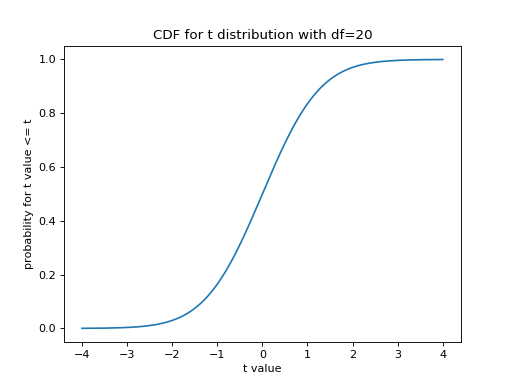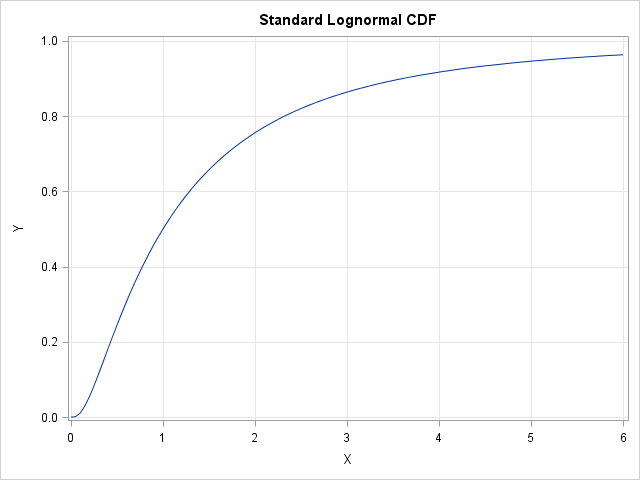

Theorem: Let $X$ be a random variable following a normal distributions: Next: 1.Index: The Book of Statistical Proofs ▷ Probability Distributions ▷ Univariate continuous distributions ▷ Normal distribution ▷ Cumulative distribution function Previous: 1.3 – The Discrete Probability Density Function For example, F( x) = 3/36 for all x in the interval [3,4).

Notice that the CDF is constant over any half-closed integer interval from 2 to 12. The values are on the vertical axis are probabilities and hence are between 0 and 1. This table defines a step-function starting at 0 for x < 2 and increasing in steps to 1 for x ≥ 12. The graph of every cdf has some properties that are easy to see: The graph is non-decreasing.
CDF GRAPH PDF
Using our table for the PDF of X, we can easily construct the corresponding CDF table: To find the CDF of X in general, we need to give a table, graph or formula for Pr( X ≤ 6) for any given k. Using our identity for probabilities of disjoint events, we calculate The probability that the sum is less than or equal to 6 can be written as Pr( X ≤ 6), which is equal to F(6), the value of the cumulative distribution function at x = 6. A normal distribution is a probability distribution used to model phenomena that have a default behaviour and cumulative possible deviations from that behaviour. The probability density function of X is displayed in the following graph.Īlternatively, if we let p k = Pr( X = k), the probability that the random sum X is equal to k, then the PDF can be given by a single formula: Some of these are listed in the table below. The other possible values of the random variable X and their corresponding probabilities can be calculated in a similar fashion. There are 36 distinguishable rolls of the dice, so the probability that the sum is equal to 2 is 1/36. There is only one way that this can happen: both dice must roll a 1. To construct the probability distribution for X, first consider the probability that the sum of the dice equals 2. where xn is the largest possible value of X that is less than or equal to x. Using our identity for the probability of disjoint events, if X is a discrete random variable, we can write. Clearly, X can also assume any value in between these two extremes thus we conclude that the possible values for X are 2,3.,12. The cumulative distribution function (CDF) of a random variable X is denoted by F ( x ), and is defined as F ( x) Pr ( X x ). The smallest this sum can be is 1 + 1 = 2, and the largest is 6 + 6 = 12. the number of different values for the random variable X. However, we are interested in determining the number of possible outcomes for the sum of the values on the two dice, i.e. So we can distinguish between a roll that produces a 4 on the yellow die and a 5 on the red die with a roll that produces a 5 on the yellow die and a 4 on the red die. Notice that all 36 outcomes are distinguishable since the two dice are different colours. the value on one of the dice does not affect the value on the other die), so we see that = there are 6 ✕ 6 = 36 different outcomes for a single roll of the two dice.

The two dice are rolled independently (i.e. There are 6 possible value each die can take. Using the table generated while creating the PMF one can calculate the value of F X(x) F X ( x) by summing all associated probabilities for.

The function is defined as F X(x) P (X x) F X ( x) P ( X x). Recall that a function f( x) is said to be nondecreasing if f( x 1) ≤ f( x 2) whenever x 1 < x 2. The CDF of a random variable X X is a function that represents the probability that X X will be less than or equal to x x. The following properties are immediate consequences of our definition of a random variable and the probability associated to an event. Notice also that the CDF of a discrete random variable will remain constant on any interval of the form. Note that in the formula for CDFs of discrete random variables, we always have, where N is the number of possible outcomes of X. In other words, the cumulative distribution function for a random variable at x gives the probability that the random variable X is less than or equal to that number x. Where x n is the largest possible value of X that is less than or equal to x. Using our identity for the probability of disjoint events, if X is a discrete random variable, we can write The cumulative distribution function (CDF) of a random variable X is denoted by F( x), and is defined as F( x) = Pr( X ≤ x). Define the random variable and the value of 'x'. Using this cumulative distribution function calculator is as easy as 1,2,3: 1. Given a probability density function, we define the cumulative distribution function (CDF) as follows.Ĭumulative Distribution Function of a Discrete Random Variable Cumulative Distribution Function Calculator.


 0 kommentar(er)
0 kommentar(er)
